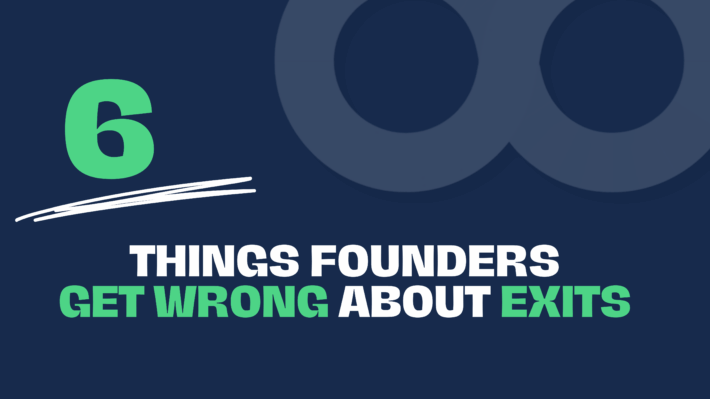What is the Difference Between Employee Stock Ownership Plans (ESOPs) & Employee Ownership Trusts (EOTs)

EOT vs. ESOP: The Key Differences
When business owners consider passing the torch to the next generation of leaders, two employee ownership models stand out: Employee Ownership Trusts (EOTs) and Employee Stock Ownership Plans (ESOPs). While both are designed to give employees a stake in the business, they operate under different mechanisms, with distinct benefits and challenges.
Let’s explore these differences…
What is an EOT?
An Employee Ownership Trust (EOT) is a model where a trust acquires shares in the business on behalf of all employees. Introduced in the UK in 2014, this model encourages long-term, sustainable employee ownership, where the trust holds shares for the benefit of the workforce. The main appeal of EOTs is their ability to promote collective ownership, which can drive employee engagement and business stability.
What is an ESOP?
An Employee Stock Ownership Plan (ESOP) is more common in the United States and operates as a retirement plan that enables employees to own shares directly or through a trust. Companies can gradually transition ownership by issuing new shares to employees or by having the ESOP purchase shares from existing owners. ESOPs are heavily regulated under pension legislation, which adds to their complexity.
Key Differences Between EOTs and ESOPs
Ownership Structure
EOT
The trust holds a controlling stake of the company shares for the benefit of all employees. Employees do not own individual shares but benefit collectively from the company’s success. The main goal of an is unity. Every employee is in it together. There’s less focus on individual gain and more on collective success.
According to the UK Employee Ownership Association, businesses that convert to EOTs have grown by over 40% year-on-year since 2017, highlighting a rising trend toward this ownership model.
ESOP
Employees own shares directly or through a trust and the shares are often allocated based on tenure, salary or other factors. This can lead to individual ownership stakes that grow over time.
Financing the Transition
EOTs are often financed through a combination of company profits and other capital. Capital the business can repay over time, making it less disruptive. However, it may take several years to complete the purchase.
ESOPs typically use leveraged buyouts, where the ESOP borrows money to purchase shares from the owner. This can expedite the transition but may also saddle the company with debt.
Case Study
Richmond Ice Cream transitioned to an EOT in 2018. The company’s owner, looking to preserve the company’s independence and legacy, structured a deal where the EOT used internal financing. Over five years, the business paid off the debt without burdening its operations, and employee engagement rose by 25% during this period.
Employee Benefits and Engagement
EOT
Employees do not directly hold shares but benefit collectively. This can lead to a sense of security and unity, as there is no risk of share price fluctuation impacting personal finances.
ESOP
Employees can build individual wealth if the company performs well, but there’s also the risk that their retirement savings could be affected by stock volatility.
Complexity and Cost
EOT
Setting up an EOT is typically simpler and less expensive than an ESOP. There are fewer regulatory requirements and the process can be completed more swiftly, making it a suitable choice for most companies.
ESOP
ESOPs can be more complex due to regulatory compliance, ongoing administration and the need for external valuations. While they can be beneficial, the setup and maintenance costs can be substantial.
Control and Governance
EOT
A board of trustees, called an Employee Council, manages the EOT, ensuring the business operates in the employees’ best interests. This model can be appealing for owners who want to maintain the company’s ethos and values even after stepping down.
ESOP
Employees have more direct control, however the degree of influence depends on how much of the company is owned through the ESOP.
Round-up
While both EOTs and ESOPs offer pathways to employee ownership, the choice depends on business goals and circumstances. EOTs provide a straightforward, unified approach that focuses on long-term stability and collective success. With fewer regulatory hurdles and ongoing administrative costs, EOTs are often the better choice for business owners looking for a smooth transition that ensures their business legacy lives on.
The growing popularity of EOTs in the UK, driven by favourable employee incentives and simplified governance, makes them an attractive and sustainable option for companies of all sizes looking to embrace the benefits of employee ownership.
ESOPs offer a flexible exit strategy, allowing business owners to gradually sell shares while staying involved in the company. This phased approach can be ideal for those who aren’t ready to handover to the leadership team. ESOPs are a way to build personal wealth—the more the company grows, the more their shares appreciate, creating a direct financial incentive to boost productivity and engagement.
Whichever you choose, try to make sure it’s best for the company and the employees, after all the name’s in the title.





